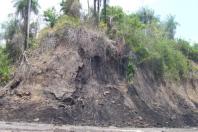IEA - International Energy Agency : Estonia is cleansing oil shale
IEA - International Energy Agency : Estonia is cleansing oil shale
Oil shale mining in Estonia, which has more than 1% of the estimated 400 billion-plus tonnes of global resources. Photo courtesy of Eesti Energia, all rights reserved.
Country's environmentally savvy oil shale technologies may trigger a fresh look at the vast global reserves of this otherwise polluting fossil fuel.
2 January 2014
This article appears in the latest issue of IEA Energy: The Journal of the International Energy Agency;click here to send a request a free subscription.
Significant reserves and nearly a century of experience in tapping this resource make Estonia's oil shale industry the most developed in the world. Oil shale, however, tops the list of the most polluting fossil fuels. One benefit the country could reap from membership in the IEA is collaboration in pursuing wider use of oil shale in a cleaner, more sustainable manner.
Not to be confused with shale oil, oil shale is a sedimentary rock containing up to 50% organic matter rich in hydrogen, known as kerogen. The extracted rock can be used directly as a power plant resource or it can be processed to produce shale oil, which in turn can be refined into gasoline, diesel or jet fuels.
Estonia's oil shale is energy-rich, but its direct combustion, or transformation into shale oil and then other fuels, emits more CO2 than any other primary fuel.
Reducing mining without reducing energy
Despite the high emissions, 70% of Estonia's total primary energy supply (TPES) in 2012 came from oil shale. Just over 85% of mined oil shale was used to produce electricity - the country's top priority for energy security - and heat generation; the rest was turned into shale oil, retort gas and other valuable chemicals.
The new IEA publication Energy Policies of IEA Countries - Estonia 2013 describes how the country is trying to slow its mining of oil shale amid environmental concerns. In 2012, Estonia mined 15.86 million tonnes of its more than 4 billion tonnes of estimated reserves, which represent just over 1.1% of global and 17% of European reserves. But the National Development Plan for Oil Shale Use for 2008-15 calls for reducing annual extraction while preserving the country's strong energy security. Estonia is also working to halve energy sector-related CO2 emissions in 2020 from the 15.7 million tonnes emitted in 2007.
How Estonia will do more with less
Estonia is relying on technological improvements to maximise oil shale yield to generate more electricity, heat and shale oil so as to maintain necessary levels of electricity and heat for the economy, which remains one of the OECD's strongest performers.
In 2011, public research, development and demonstration (RD&D) expenditures exceeded EUR 9.4 million, with the oil shale sector accounting for one-third. That spending demonstrates how RD&D is an economic priority, with the national research and development and innovation system enjoying one of the highest growth rates in gross RD&D domestic expenditure among OECD member countries in recent years.
The aim is to improve technologies for greater efficiency throughout the oil shale cycle, from mining to consumption. The research concentrates on two aspects: maximising the production of liquid fuel and reducing the carbon intensity of oil shale-based power and heat generation.
The recently launched ENEFIT280 technology of the state-owned company Eesti Energia highlights Estonia's achievements in reducing emissions and increasing efficiency for the oil shale industry. ENEFIT280-equipped plants utilise 100% of mined oil shale, producing shale oil, electricity and retort gas with higher efficiency and improved environmental performance than other models. This essentially water-free, carbon capture-ready technology also generates electricity from excess heat and retort gas, further offsetting CO2 emissions. Another competitive advantage of ENEFIT280 is the absence of waste, with the only by-products being non-hazardous residue ash. The ash can replace clinker in cement production and is registered by the European Union as a raw material for different applications in the construction and materials industries.
Estonia produced the first barrel of ENEFIT280 shale oil in December 2012.
Renewable energy is another solution. Renewables, particularly biomass for heat, provided 14.6% of Estonia's TPES in 2012, a share which would rank tenth among IEA members.
The European Union Renewable Energy Directive calls for sourcing one-quarter of Estonia's gross final energy consumption from renewable sources. To increase and improve the sector, Estonia is not only spending heavily on RD&D for biomass-based energy, wind and solar power, but it is also pursuing cutting-edge solutions such as fuel cells and electrolysers as well as computer-based energy management technologies for buildings, power storage and grid development.
Estonia exports its home-grown technologies
Relatively little is known about many of the world's deposits of oil shale.
The United States tops the list of the richest reserves, accounting for more than 60% globally, with the most concentrated deposits located in the Green River Formation that lies in western Colorado, eastern Utah and southern Wyoming.
Besides Estonia, countries with large oil shale reserves include Australia, Brazil, China and Russia. There are also significant reserves in Jordan, Morocco, Sweden, Syria and Turkey.
Countries with the know-how have used oil shale for different applications for decades, but Estonia's latest technological breakthrough could catalyse a new approach to exploring the vast global reserves of this fossil fuel frequently perceived as a significant pollutant.
Estonia is keen to explore opportunities for the wider application of its latest technologies. Eesti Energia started its international oil shale activities in 2006, and has oil shale operations in Jordan and the United States.
Eesti Energia's subsidiary Enefit is developing two parallel oil shale projects in Jordan, where it acquired the exclusive right to develop, design, finance, construct and operate a 500 megawatt oil shale-fuelled power station.
In the US state of Utah, Eesti Energia purchased Oil Shale Exploration Company in 2011. Properties owned or controlled by Enefit contain an estimated 2.6 billion barrels of recoverable oil that can be unlocked safely with conventional mining, mineral processing and refining methods.
How the IEA helps oil shale RD&D
Based on an agreement Estonia reached with the IEA on the sidelines of the 2011 IEA Ministerial meeting, the Agency took part in the International Oil Shale Symposium hosted by Estonia in June 2013. The Ministry of Economic Affairs and Communications and the IEA organised a joint plenary session on energy technologies, with the IEA presenting some of the latest advances in energy technology and policy for better use of oil shale.
Estonia is also expected to join a number of IEA-supported research networks related to the oil shale industry, including the Gas and Oil Technologies Implementing Agreement and the Implementing Agreement on Fluidized Bed Conversion, to further aid and benefit from international technological advances.
The symposium's findings built in part on national basic research on oil shale conducted by the Tallinn University of Technology. But RD&D is led by the top oil shale users, including Eesti Energia, which expects its RD&D will result in two more ENEFIT280 plants by 2016 as well as shale oil-upgrading facilities for refining. Export of the technology may be aided by ENEFIT280's modular design, which allots each processing unit a specific purpose, optimising maintenance, processes and adaptability to different oil shale deposits' characteristics.
The International Energy Agency (IEA) produces IEA Energy, but analysis and views contained in the journal are those of individual IEA analysts and not necessarily those of the IEA Secretariat or IEA member countries, and are not to be construed as advice on any specific issue or situation. Click here to send a request a free subscription to IEA Energy.
Homepage photo of Eesti Energia's first ENEFIT280-equipped plant, which uses virtually no water to produce shale oil waste-free: courtesy of Eesti Energia, all rights reserved.
http://www.4-traders.com/news/IEA-International-Energy-Agency--Estonia-is-cleansing-oil-shale--17747787/


